In recent years, drones have been used for a variety of purposes. There are those who entered this world from drones and those who originally flew RC helicopters. Meanwhile, radio-controlled airplanes are far from drones, but radio-controlled helicopters can be said to be close to multi-copter type drones, but there are quite a few differences between the two.
So this time I would like to explain the difference between Drones and RC helicopters, and what are the advantages and disadvantages between these two flying devices. However, there is a solid difference between drones and radio-controlled helicopters. To make it easier for you to understand the differences between an aerial drone vs helicopter filming, we’ll discuss in this article
Table of Contents
Drone vs Helicopter
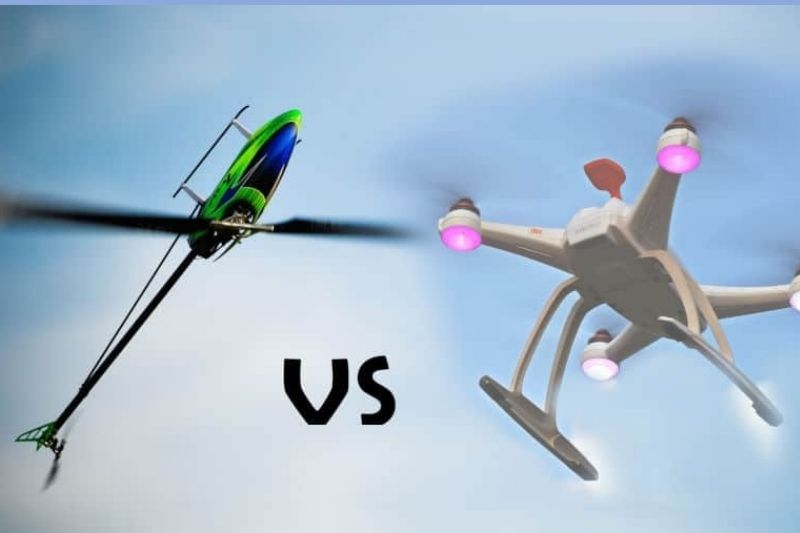
Drones are rigorously tested before they go on the market for safety and robustness. These tests are not regulated by any governing bodies, and their thoroughness is solely determined by the manufacturer’s jurisdiction and judgment. No matter how realistic the testing environment may be, it is impossible to simulate the real-life flying conditions that a drone will encounter. It can be argued that most drones currently on the market are not adequately tested in an environment comparable to that of a power-line inspection.
It would be of primary importance to determine if a drone can carry the necessary hardware for aerial inspection. To meet these requirements, the drone must safely fly with all the equipment necessary. This includes cameras that can take photos from different angles and thermal imaging technology to indicate hot spots. LiDAR equipment scans power lines to create 3D images. Although some companies offer tailor-made drones, their development and testing can be costly and time-consuming.
What does this all mean for the world of utility asset managers? The majority of drones currently on the market struggle to function smoothly for more than two hours with all their equipment. There are a few highly skilled drone types that can perform such tasks longer and without any interruptions. These drones have a major drawback: the initial investment is five times more than it would cost to deploy a piloted helicopter for the same task. The initial costs of a drone capable of safely and efficiently inspecting power lines can be anywhere from EUR200,000 to EUR1million, depending on the type.
A drone can be used in certain situations, even though it is expensive, such as when flying conditions are extremely dangerous due to various environmental factors.
The most common assumption is that drones can be used to inspect power grids. Their exploitation is cheaper in theory (i.e., lower fuel costs, replacement parts, storage, etc. This assumption is correct, but only if the drone could carry 15 to 20 kilograms of inspection hardware. Current experience suggests otherwise.
Laserpas Company provided both a drone as well as a piloted helicopter for inspection of over 700 km of medium voltage power lines in central Europe. The project was divided into two blocks with identical geographical layouts. One block was to be surveyed using a drone; the other was to be surveyed using a manned helicopter. Based on the grid’s specifications, the projected costs of the project suggested that the drone was a better option. The drone’s unscheduled downtime made it possible to complete the project quicker, cheaper, and more efficiently than a helicopter. The team chose the drone-based upon its specifications and ability to fly with the required equipment weight. However, delays were inevitable due to the drone’s frequent and unexpected breakdowns.
It is tempting to use drones for utility asset management. Many clients find their innovation attractive. The unmistakable benefits of using drones for power grid inspections include better flight precision and greater attention to detail. A pilot must learn to fly a drone to inspect the tangled web of medium voltage power lines. A drone is programmed to fly extremely precisely.
Unmanned technology has many drawbacks. There are many issues with unmanned technology, including the lack of drones that can carry the equipment required and their sometimes questionable reliability for the longer flying times. Drones’ collision avoidance capabilities also leave much to be desired. There are now drones that are able to avoid large static obstacles, such as walls and buildings, yet the unexpected – albeit ordinary – obstacles that pose no difficulty to a helicopter pilot, such as unmapped transmission cables that cross the planned inspection route, are fatal to any drone.
This highlights another problem when it comes to collisions and breakdowns. Manufacturer warranties typically only cover the drone itself, not the payload equipment. A lot of cases involving aerial power line inspections could see technology being damaged or destroyed by a falling drone. This could make the total cost of the drone even more expensive than its cost. Bearing in mind the conventional risks involved when flying piloted helicopters, serious incidents are much less frequent, and therefore the levels of reliability and safety are good, with virtually no financial implications.
A significant advantage of piloted aerial inspections over other methods is the consistency of safety regulations across the globe. Helicopters have always operated within a common framework of rules and regulations. However, there are some adaptations that may be required by each country. However, drone flying regulations are largely ambiguous in most countries. A lack of clear, official regulations can cause problems in a project. The above example shows that the permissions to fly the drone in central Europe took six months, despite the fact that the authorities had promised it would take only four weeks.
Unlike Drones, Helicopters can also carry heavy payloads. Helicopters today can only carry a small amount of weight. This means that modifications may be required to make lighter but more expensive materials or to use them in smarter ways.
Capabilities for low-light
- Poor low-light performance is a common problem with most drones. Although the performance of drones gets better with each model, there is still a lot of noise when the sun goes down.
- A helicopter can take aerial photos with any camera you choose. Low-light capabilities are determined by the camera you choose, not the drone’s built-in camera. This is the best part about the helicopter: you can take beautiful shots of the city lights below.
Payload, Range, and Flight Time
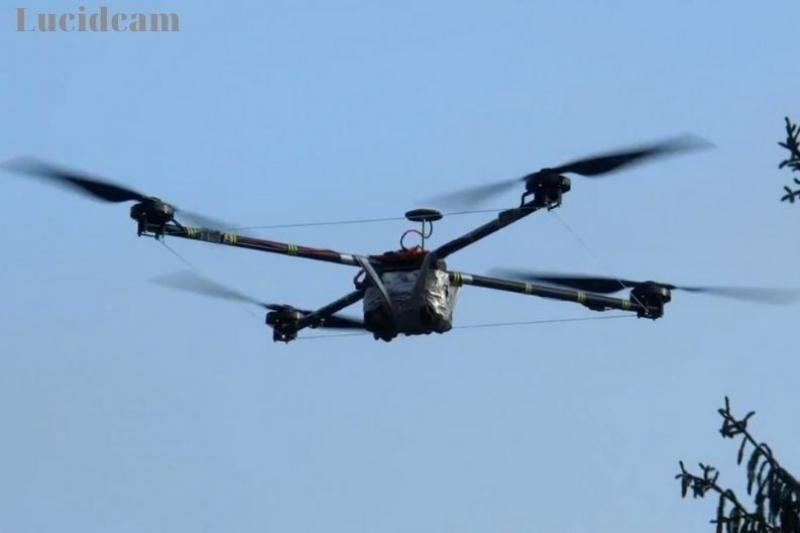
Helicopters are easily the superior platform when it comes to range capabilities. Helicopters can fly further and longer than any commercially available drone. This is equivalent to hundreds of miles and hours of flight time. Another limitation of drones, though understandable, is their limited flight time.
The DJI Mavic Pro 2’s 30-minute flight is currently the longest. Operating drones is not easy. You’ll need to be careful with your battery life, and landings are common just for safety. Helicopters can fly much further than this. You can therefore cover more ground.
Helicopters are able to carry the heaviest camera rigs that drones simply cannot lift. The quality of the images produced by both platforms is almost identical, thanks to the development of smaller, high-definition cameras. A helicopter is necessary to transport the required camera gear if your project requires high definition.
Weather Conditions And Production Location
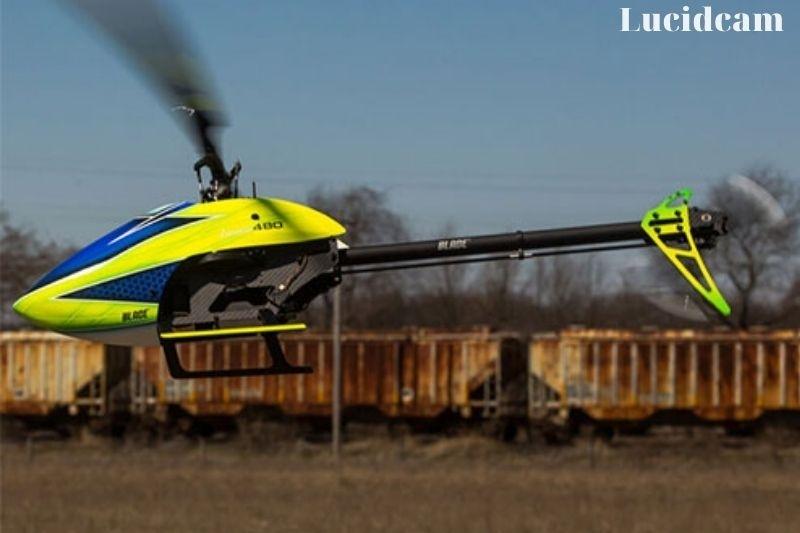
Helicopters can be difficult to handle at high elevations and in hot weather, but they are great for getting to remote areas due to their speed, range, and payload capabilities. They can transport not only the camera crew but also other members of the production team into off-road locations. Drones have a limited range and flight time, so they can only be flown where the pilot can access them. There is no restriction to flying to a place by helicopter, then dropping a drone to work with the camera crew.
The best drone footage is often captured in areas where helicopters are not allowed or required to perform at the highest quality. These creative angles often include flying close to the ground, flying over trees, climbing up ridges, and flying around buildings or structures. Drone aerial filming allows for cameras to track a person over greater distances and with more effectiveness than a camera mounted on a tracked dolly. These are extremely dangerous situations where a helicopter cannot match the small aerial footprint of a drone.
Bad weather can affect both drone and helicopter flight operations and cause delays and cancellations to filming opportunities. Helicopters are more difficult to fly because they require more planning and preparation, especially when filming is tight. Drones can be filmed quickly and easily if the weather is clear. Wind conditions can severely limit drone possibilities.
FLight Rules and Regulations
Drones are facing many challenges. There are increasingly more regulations and rules about them. It is becoming more difficult to fly in most cities and towns. Although you could research the people and get in touch with them, that is not the way the cinematographer’s mind works. They can become frustrated by the red tape.
In addition to restricting the flight area, there are rules for flying:
- Fly in day
- Fly within range visible to the eye
- Create a distance of at least 30m between people and objects
- Don’t fly in the sky near crowds, like festivals
- Do not transport hazardous objects like objects.
- Don’t drop objects from unmanned aircraft vehicles.
Design and Shape
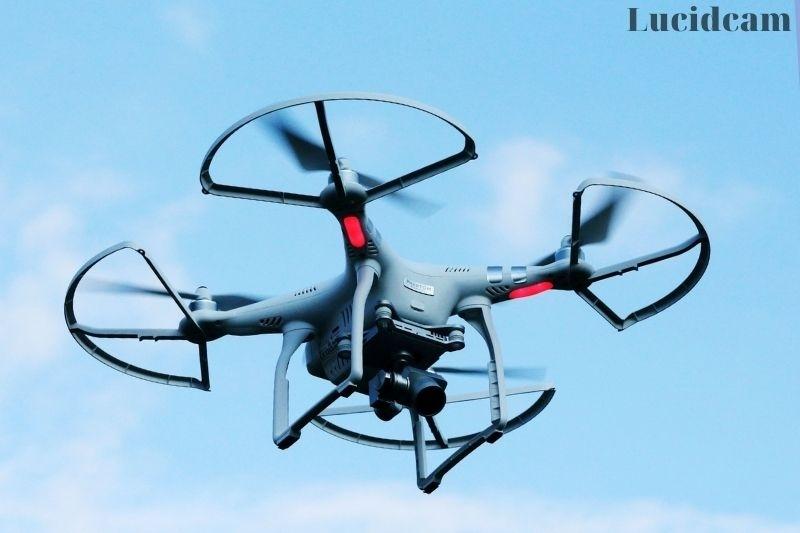
- You can clearly see the difference between a quadcopter drone or a standard helicopter.
- The helicopter is designed after it and has one main rotor, whereas quadcopters have four.
- Quadcopter blades are usually smaller due to the more of them, but drones can be made any size or shape even a helicopter.
Easy Flying
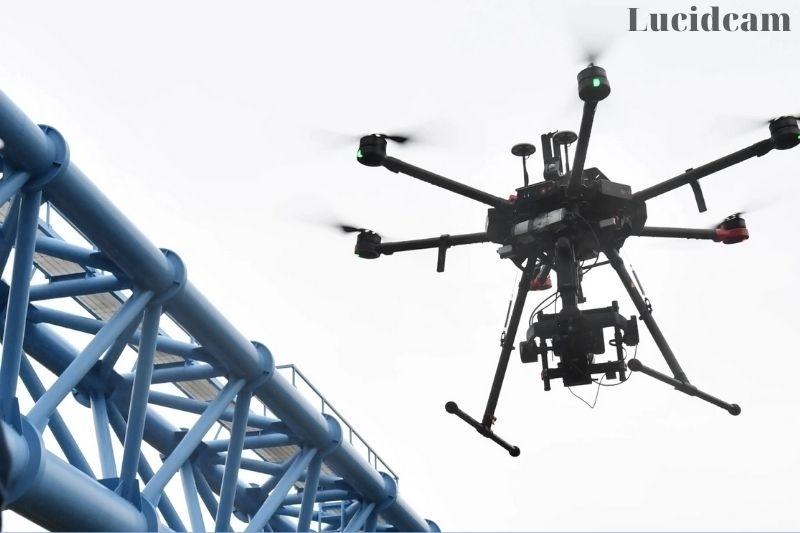
Drone pilots who are new to the hobby find it easier to fly a drone because they have four rotors and can control them with the onboard software included.
It can be difficult to pilot an RC heli on your own. There is limited or no software that can help. This makes it more challenging, but many people find it rewarding.
Capabilities
- RC helicopters are generally made just for flying, competing, or racing, with a few exceptions to that rule.
- You might also use a drone to film with a camera attached or deliver goods if you have a larger model.
Control
- A remote control helicopter gives the pilot more control and autonomy, but you must also keep an eye on the aircraft in the sky.
- Many drones are equipped with GPS and software that allow them to fly autonomously, even if they lose sight of the object. They can also land at their base by pressing a button.
Are You Going To Fly RC Helicopters And Drones Wherever?
For many decades, RC helicopter pilots were able to fly their cars everywhere. But, that has changed as drones have become more common.
The laws became more restrictive with the introduction of GPS-enabled, automated drones and quadcopters. These aircraft could be flown with the Federal Aviation Administration trying to make a few adjustments.
If your plane weighs more than 250 g, RC amateurs will need to register it and provide private information.
There are also limitations on the height you can fly your aircraft at, with a maximum of 400 feet being the ceiling.
These laws and regulations are constantly being updated and maintained, so the RC pilot must keep up with the changes.
However, you are responsible for adhering to local drone regulations. These can include weight limits or no-fly zones.
How Does a Drone Work?
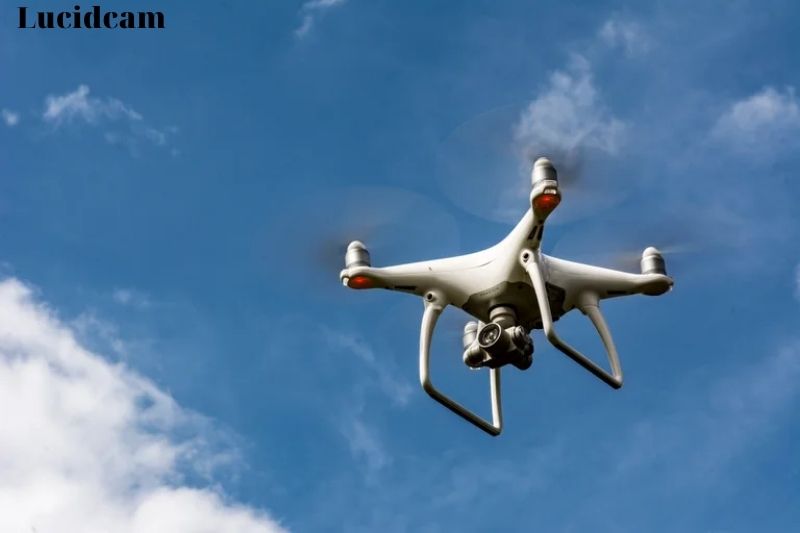
A drone refers to any unmanned aerial vehicle (UAV). A drone (or quadrotor) is basically an unmanned flying robot that can be controlled remotely via a ground control system on a computer or remote controller. It can fly independently (without the assistance of a human pilot) by using onboard GPS and waypoint navigation software.
Drones are made from light composite materials, which increase their maneuverability and strength enough to withstand high speeds at altitudes. These materials also help in noise reduction and vibration absorption. The aerial vehicle’s central compartment houses the sensors and onboard navigation systems.
A quadcopter is a drone with four arms. Each arm is equipped with a propeller. Each arm is connected to a propeller. Two rotors move clockwise and two counterclockwise. Aerodynamically, it is unstable. A flight computer is required to adjust the propellers’ RPMs and convert input commands into the desired directions.
Drones can travel in all directions (at speeds of up to 80 miles per hour) and hover for as long as ten to twenty minutes. Drones are used for surveillance and disaster relief, as well as recreational purposes.
How Does an RC Helicopter Work?
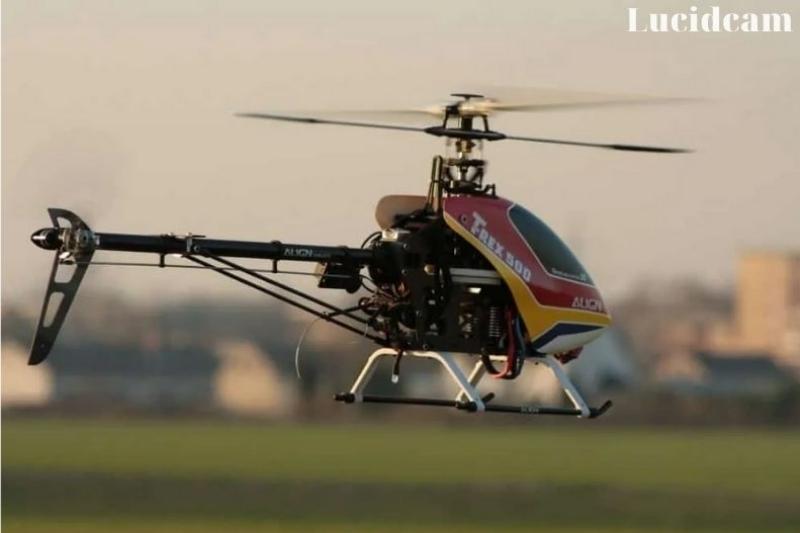
An RC helicopter can be described as a radio-controlled model aircraft. In terms of construction and aerodynamics, it is different from an RC plane. There are many designs that focus on maneuverability. It is more difficult to fly the less maneuverable designs.
RC helicopters fly in the exact same manner as larger helicopters, but they are controlled from the ground and not inside the helicopter. The RC helicopter ground pilots can perform maneuvers like spinning, hovering, or flying backward using a stick (cyclic and collective pitch control), as well as the throttle. These model aircraft require a lot of skill and practice to fly.
The RC helicopter can fly for seven to twelve minutes and reach speeds up to one hundred miles an hour. This averages around forty-five to sixty mph. These helicopters are used to take aerial photography, inspect, or observe from low altitudes.
What power and ranges are RC Helis and Drones capable of?
When you are looking for a drone or helicopter, one of the most important things to consider is its capabilities. This includes the transmission range and the battery power.
The current long-range drone models can fly up to five miles before their signal is lost. RC Helis, provided that they use the same sensitive radio transmission technology as the drones, can also fly this distance.
These ranges are different because the RC pilot wants to be able to see their aircraft so they can have complete control.
- A UAV with a camera attached and automated software onboard, you don’t need to keep it close. You might consider getting something that can do more.
- Battery life is approximately 10 minutes.
- You can fly a drone in 10-20 minutes, depending on what model you choose.
The difference is that drones fly far away, so you will need to have enough batteries for them to return.
What is the cost of each of these aircraft?
There’s such a varying price range when it comes to drones and RC helicopters with so many features and specifications that can make a difference in their cost.
A low-range helicopter is generally cheaper than a helicopter, but it doesn’t necessarily mean they are of equal quality.
UAVs, as well as RC Helicopters, can be purchased for around $100, or even more if you go beyond that.
These costs can vary depending on your use of it, your skill level, and the specifics that you need, but generally speaking, a basic drone will generally be cheaper to buy.
You should also consider other factors when it comes down to cost.
Although RC helicopters are more likely to crash outdoors, drones can be used indoors.
It’s up to you to decide what you want to do with your money and what you expect to get from experience.
You can check out a list of drones under 500 or drones under 200 if you want.
FAQs
Can Drones And Rc Helicopters Feel in the wind?
Drones should never be flown when there is a strong wind, as they are unable to handle extreme weather conditions as well as an RC helicopter.
However, RC helicopters can do more damage if they crash, so it is best not to fly either type of aircraft in poor conditions.
Are Drones And RC Helicopters Governed By a Warranty?
Due to their unique build, RC helicopters typically have a shorter warranty than drones. Some brands may not offer any warranty at all.
Standard drones will come with a 12-month warranty. However, this warranty is subject to change depending on whether the drone is damaged or malfunctioning. Cheaper models typically have no warranty.
Conclusion
In short, Unmanned aerial vehicles that can be flown autonomously by their onboard computers are called drones. An RC helicopter, a radio-controlled model aircraft, is one of these. Both can be used for recreational and commercial purposes, with drones gaining in popularity and advancement.
Drones and helicopters are two ways to capture stunning footage from a bird’s eye view. Both drones and helicopters are used by many aerial filming and photography businesses. There are pros and cons to each of these options. Each device is unique and has its strengths, as you can see. In our opinion, it makes no sense to start with an RC quadrocopter todayUAVs are capable of performing certain maneuvers, such as landing or take-off automatically.
Lucidcam hopes this article will be helpful for you. Thank for reading!
